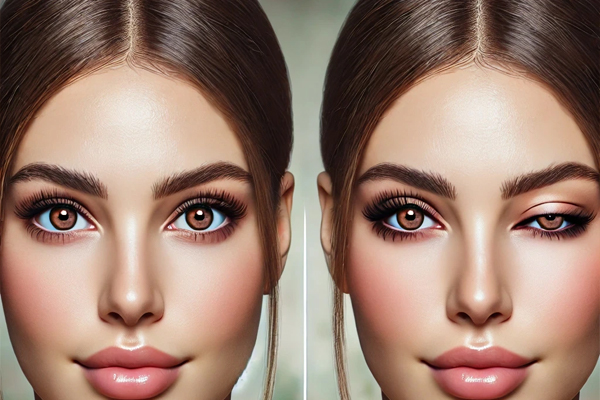Ptosis correction
Ptosis correction is a surgical procedure designed to treat ptosis, a condition characterized by drooping of the upper eyelid due to weakened or dysfunctional eyelid muscles. The procedure restores normal eyelid function and improves both the aesthetic appearance and vision.
Purpose of Ptosis Correction
-
Functional Improvement:
- Corrects vision obstruction caused by drooping eyelids.
-
Aesthetic Enhancement:
- Improves the symmetry and appearance of the eyes for a more alert, youthful look.
-
Address Congenital or Acquired Ptosis:
- Treats both inherited (present at birth) and acquired (developed over time) ptosis.
Causes of Ptosis
- Congenital Ptosis: Weakness in the levator muscle from birth.
- Aging (Involutional Ptosis): Muscle or tendon stretching over time.
- Trauma or Injury: Damage to the eyelid or surrounding structures.
- Neurological Conditions: Affecting the nerves controlling eyelid movement (e.g., myasthenia gravis, Horner’s syndrome).
Types of Ptosis Correction Surgery
-
Levator Resection or Advancement:
- Tightens or repositions the levator muscle to lift the eyelid.
-
Müller’s Muscle Resection:
- Shortens Müller’s muscle for mild ptosis correction, often performed internally.
-
Frontalis Sling:
- Uses a sling to connect the eyelid to the forehead muscles, allowing the forehead to lift the eyelid. Commonly used for severe or congenital ptosis.
-
External Eyelid Surgery:
- For acquired ptosis due to age or trauma, involving direct adjustments to the levator muscle.
Procedure Overview
1. Consultation:
- Comprehensive eye examination and discussion of medical history.
- Tests to determine the degree of ptosis and muscle function.
2. Preparation:
- Avoid smoking and certain medications prior to surgery.
- Follow pre-operative instructions regarding food, drink, and hygiene.
3. During Surgery:
- Performed under local anesthesia with sedation or general anesthesia.
- The surgeon makes precise adjustments to the levator muscle or other related structures.
- Incisions are strategically placed to minimize visible scarring.
4. Duration:
- Surgery typically takes 1-2 hours.
Recovery Process
-
Immediate Recovery:
- Mild swelling, bruising, and discomfort are common for the first few days.
- Blurred vision or dryness may occur temporarily.
-
Activity Restrictions:
- Avoid strenuous activities, bending over, or heavy lifting for at least two weeks.
- Use prescribed eye drops or ointments as directed.
-
Healing Timeline:
- Most swelling subsides within 1-2 weeks.
- Full results are visible after 4-6 weeks.
Benefits of Ptosis Correction
- Restores normal vision by lifting the drooping eyelid.
- Improves eye symmetry and overall facial appearance.
- Provides long-lasting functional and aesthetic results.
Risks and Complications
- Scarring: Minimal with proper surgical techniques.
- Dryness or Irritation: Temporary dryness or incomplete eyelid closure may occur.
- Overcorrection/Undercorrection: May require revision surgery in rare cases.
- Infection or Bleeding: Rare with appropriate care.
- Asymmetry: Minor differences in eyelid height are possible.
Ideal Candidates
- Individuals experiencing drooping eyelids affecting vision or appearance.
- People in good overall health without conditions that impair healing.
- Children or adults with congenital or acquired ptosis.
Post-Surgical Care
- Use cold compresses to minimize swelling and bruising.
- Avoid rubbing or touching the eyes.
- Protect the eyes from direct sunlight and follow up with the surgeon as advised.



